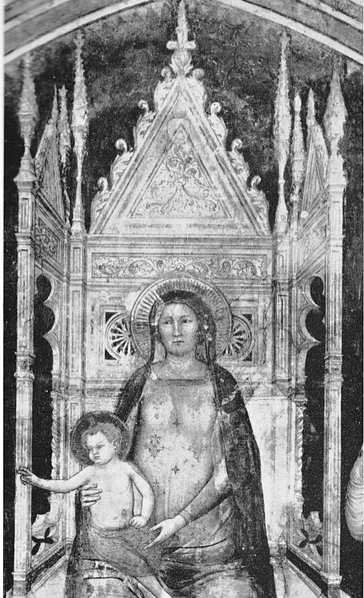Descrizione
Storia dell’arte 5, Gennaio – Marzo 1970
Silvana Macchioni
Note sulla decorazione pittorica della Badia di Viboldone
The focal point of the series of frescoes adorning the Abbey of Viboldone in the suburbs of Milan is in the zone of the Tiburium where the cycle begins with the Virgin flanked by four saints and a donor, frescoed on the triumphal arch in 1439. The inner arch and the lateral walls are embellished with a Last Judgment opening out like a vast triptych. This was painted before 1365. The obviously giottesque character of both series, which nevertheless differ from each other both in style and in technique, engaged the attention of art critics even at the end of the last century when a first attempt at restoring them was made, their interest being directed to the problem of their connection with Giotto’s Milanese period and the post-giottesque school of the first and second generation. This problem however implied not only an analysis of Tuscan influence but also the evaluation of stylistic and technical innovations that were only to be understood in the context of a cultural milieu centered in Padua. This fact exemplified in the Majesty, where the treatment of spatial values and a type of « naturalism » appear that are foreign to a rigid Tuscan conception, and in the Judgment, where the new chromatic technique is to be associated with the reform introduced by such a brilliant disciple of Giotto as Stefano. The vast literature dedicated to the subject, splits into two distinct categories: the one, based on Longhi’s arguments, asserts the integral giottesque character of the two series, whereas the other is inclined rather to limit the giottesque component lo the vast radius of cultural influences spreading throughout the Po valley, from Milan to Bologna, from Verona to Padua, from Padua to Treviso, in the middle of the century (Toesca, Arslan, Brizio). In fact, the problem is extremely complex and cannot be reduced to a mere question of the contacts between Tuscany and Lombardy instituted by Giotto and his followers. This is evident in the Majesty, in which various elements of iconography and of style typical of the Veronese school come to light, whereas in the Judgment the treatment of spatial and chromatic values is manifestly Paduan. Historical events with the opening up of political contacts and cultural exchanges in the middle of the century, between the Visconti Signoria surrounding Signorie, particulary with the Scaligeri, reveal that the two scenes in the Lombard abbey witness to the fact that the giottesque component was associated with a Lombard component indebted, in turn, to Veronese influence for a kind of « naturalism » that was a forerunner of Altichiero in the first place and thereafter followed in his wake. In the long run this current was to prevail over the giottesque element.
